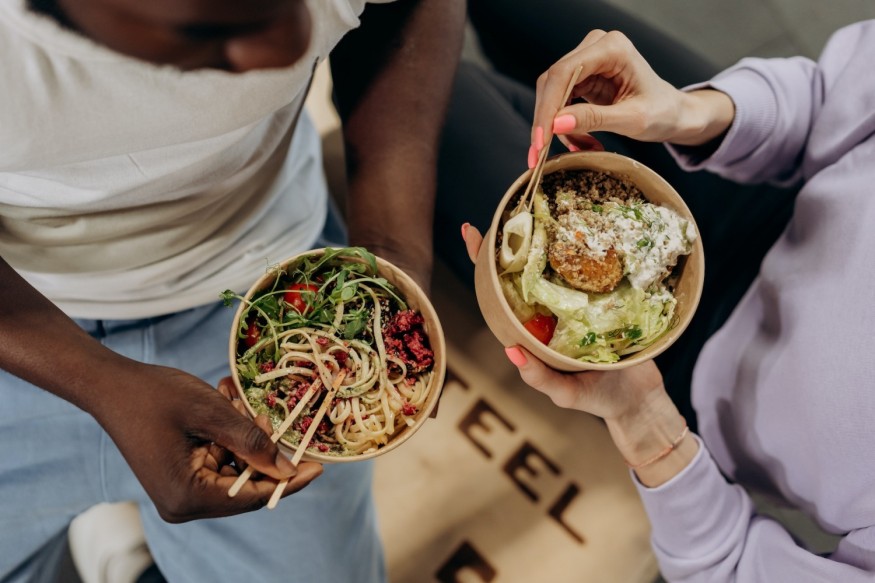
The ketogenic diet - a high-fat and very low-carb eating plan. There are many people sharing their daily ketogenic meals on social platforms. Most of them aim to lose weight through this diet. But it can be difficult to start and stick to. Because if you get into the ketogenic diet, you will have to ditch delicious pasta, pizza, and burgers - loaded with carbohydrates which are the nutrients keto shouldn't overdose on.
For people who have been dependent on carbohydrates for energy for a long time, switching to a ketogenic diet may cause discomfort symptoms. For example, mood swings, fatigue, lethargy, headaches, constipation, and difficulty concentrating. This state is known as the keto flu.
If you want to lose weight, you can certainly adopt a ketogenic diet. So how do you start a ketogenic plan? How can you avoid the negative effects of this diet on your body? Read the following steps to learn how to implement this plan.
1. Clarify your goal: lose weight or keep ketosis?
Ketogenesis can really help you control your appetite and achieve weight loss and health. But don't lose sight of your goals - why do you want to lose weight or get healthy?
If you need to lose weight for a wedding in a few months, you need to severely restrict your carb intake. If you want to lose fat at a moderate rate or maintain a state of ketosis, then you should adapt to a high-fat diet as the initial goal and gradually reduce your carbohydrate intake, for example, only eat carbs at noon in the first week.
2. Keep in mind what foods you can't eat and what you can eat.
Remember to stay away from all carbohydrates! Ketogenic is essentially a strict low-carb diet. You can't eat toast, pizza, burgers, or chicken nuggets with flour, as well as can't drink cola, milk tea, and sugary lattes. Be wary of certain high-carb vegetables such as potatoes, taro, eggplant, etc. Most fruits are high in fructose, but you can eat strawberries, blueberries, and raspberries as long as they are fresh and not processed (which usually contain a lot of refined sugar). Avocados are very keto-friendly, please stock up on some.
3. Intake of adequate electrolytes and fiber.
Eat low-carb, fiber-rich vegetables such as spinach, cabbage, and cauliflower. These vegetables are rich in potassium and magnesium to offset lost electrolytes from your body. In addition, choosing Himalayan salt and organ meats can also replenish electrolytes and vitamins, which can alleviate your keto flu symptoms and help you ride out the adaptation period.
4. Avoid sugary sauce and dressing
Be careful what you eat every day. There is also sugar in the dressing that is secretly hindering your ketosis. There's more sugar in peanut butter and jam than you might think and hidden sugar in BBQ sauce and Korean hot sauce. You need to check the product ingredient list and nutrition facts to make sure there is no sugar in the top 5 ingredients. Go check the labels of your house seasonings now and weed out the ones that aren't keto-friendly.
5. Shop for must-haves and keep them within reach
Reducing the proportion of carbohydrates means that the energy gap provided by carbs needs to be filled by fat. It's very important to keep your refrigerator stocked with fatty foods at all times. Here are some foods you can stock up on:
Bacon (Unsweetened)
Fatty Sausage
Any Cut Of Beef and Lamb
Poultry Thighs/ Breasts/ Wings (with Skin)
Olive Oil, Coconut Oil, Butter (please don't buy vegetable butter)
Cream, Mozzarella, Cheddar, Mascarpone
Cauliflower, Spinach, Kale, Bell Peppers, Mushrooms
Coconut Flour, Almond Flour, Psyllium Husk Powder (can be used to substitute flour for keto baking)
In addition to these staples, you'll need some condiments to spice up your food, as well as mood-enhancing snacks:
Parsley, Thyme, Garlic, Black Pepper, Himalayan Salt, Paprika, Stevia, or Erythritol
Mayonnaise (usually vegetable oil and egg yolk)
Pickles, Original Tomato Paste, Mustard Sauce
Almonds, Pecans, Macadamia Nuts, Walnuts, Pumpkin Seeds (higher carbohydrates: Pistachios, Cashews, Pine Nuts)
100% Chocolate or Chocolate Powder (can make hot cocoa)
6. Try Keto products and ready-to-eat meals
If you're looking for a quicker way to eat enough fat and avoid carbs, try some keto-oriented packaged foods and meal delivery. Some processed food producers have been able to offer keto-friendly options such as keto cookies, keto protein bars, and more. You can check these brands:
SuperFat: Chocolate Chip; Peanut Butter Chocolate Chip; Pancake Mix; MCT Oil
DangFood: Toasted Coconut Chips; Keto Bars in a Variety of Flavors
iHerb: Wide kinds of snacks for different diets, including keto.
Factor 75 can provide keto meal delivery, which only needs to be heated in a microwave or oven to eat. When ordering food online, check historical price changes and search for coupon codes.
When ordering ketogenic foods online, don't forget to search for coupons first to help you save money. If you want to stick to your budget, be sure to check for the latest coupons of the above brands!
Gradually reduce carbohydrates and increase fat. Haste makes waste. Remember, ketogenesis is a diet as well as a lifestyle, and it will help you stay away from processed foods and eat more whole foods. You should always keep an eye on your body's health. If your body can't afford a high-fat diet, it's hard to stick to it in the long run. Remember to use ketone test strips to check ketone levels. If it exceeds the normal level, consult your doctor for help.
© 2026 ScienceTimes.com All rights reserved. Do not reproduce without permission. The window to the world of Science Times.












